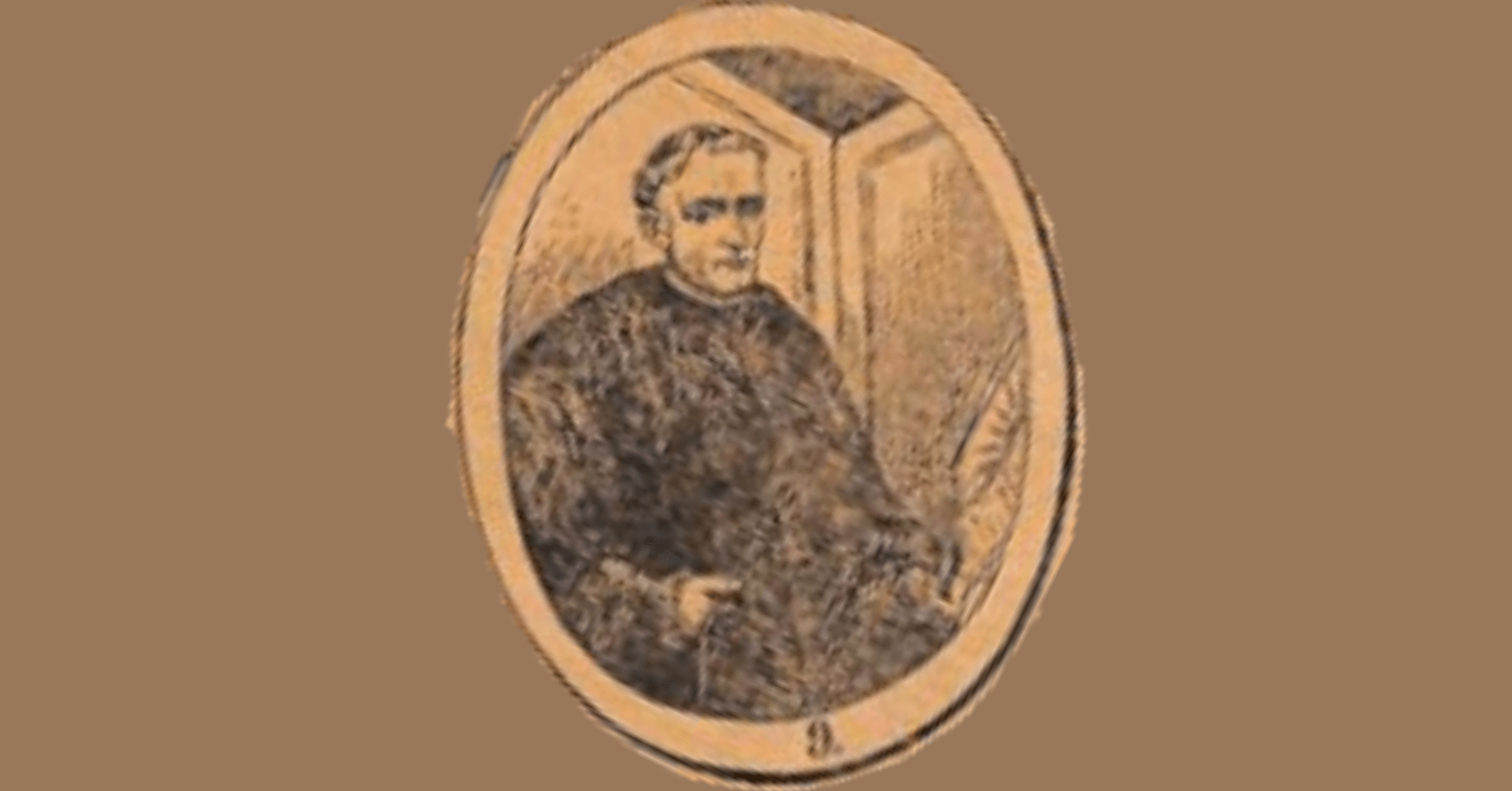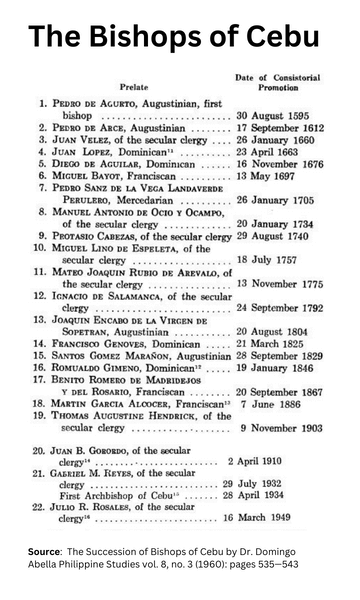Bishop Pedro Sanz de la Vega y Landaverde was consecrated bishop of Cebu on January 26, 1705. But he never set foot in Cebu. Bishop Pedro refused to travel to the Philippines, offering one excuse after another until he died on Dec. 17, 1727. Even after he was excommunicated and jailed for defying orders to go to his bishopric, he was adamant in staying put in Mexico.
“Until his death twenty-one years later, no power on earth sufficed to push or pull him from New Spain to the Philippines where his diocese was,” wrote the late Dr. Domingo Abella in his paper “The Succession of Bishops of Cebu,” which was published in the July 1960 issue of Philippine Studies of the Ateneo de Manila University.
Bishop Pedro was a Mercedarian or one who is a member of the Order of the Blessed Virgin Mary of Mercy.
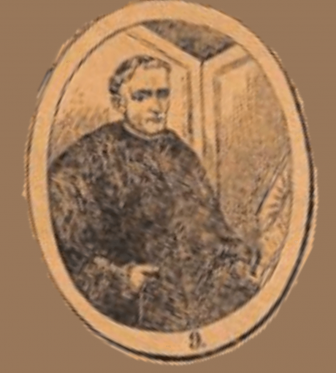
Confusion over names
Abella lists him as Bishop Pedro Sanz de la Vega Landaverde. Bag-ong Kusog lists his name as Pedro Saenz in a March 25, 1938 story on the bishops of Cebu. In his paper, Abella says this is an error caused by “numerous discrepancies among ecclesiastical chroniclers and annalists.”
“Not only do our standard authors differ as to dates but also as to names; thus, we read “Augusto” for Agurto, “Aras” for Arce, “Dayot” far Bayot, “Saenz” for Sanz, “Osio” for Ocio, “Jornada” for Foronda, “Ezpeleta” for Espeleta, etc.,” Abella wrote. The historian said he studied “a veritable pile of documents concerning (Pedro Sanz de la Vega Lanclaverde and Sebastian de Foronda) in the Vatican, SevilIe, and Mexico City.”
The unofficial database of Catholic bishops and dioceses, Catholic-Hierarchy, however, lists him as Bishop Pedro Sanz de la Vega y Landaverde. Although the site is not affiliated with the Roman Catholic Church, it uses official Vatican documents as reference.
A trove of letters by Bishop Pedro that is now at the Archivo General de Indias of the Spanish Archives identifies him as Fray Pedro Sanz de la Vega y Landaverde, Bishop of Cebu.
Bishop Pedro was recommended to the King of Spain by the Council of the Indies on Nov. 13, 1703 as replacement of Cebu Bishop Miguel Bayot, who died on August 28, 1700. The Vatican gave his consistorial promotion on Jan. 26, 1705. The following year, Bishop Pedro sailed to Mexico, where he was consecrated. But he would never leave Mexico.
The bishop’s excuses
“Alleging now ill health, now the lack of funds for the journey, now the debts he had contracted in Mexico and which he had to settle before setting out, now some other excuse, Bishop Pedro managed to postpone his departure again and again. Neither repeated royal decrees, nor the urging of the viceroy and other high officials of New Spain, nor the threat of incarceration, nor even its actual imposition availed to make him proceed to Cebu,” Abella said in his paper.
The King of Spain sought Vatican’s help and in 1716, Pope Clement XI authorized Archbishop Lanciego of Mexico, who consecrated Bishop Pedro, to impose on him “the canonical sanctions.. . including the suspension of all his episcopal prerogatives and deprivation of his see, in accordance with law.”
Archbishop Lanciego then set up an ecclesiastical tribunal to handle the case. Abella said “Bishop Landaverde defended himself vigorously with a wealth of legal technicalities.” Bishop Landaverde cited in his defense the precedents of two prelates assigned to Philippine dioceses, Bishop Diego de Aguilar of Cebu and Bishop Diego de Gorospe y Irala of Nueva Segovia or the Church of Cagayan. The two “tarried long in Mexico before embarking for the Philippines.” He also cited the case of a fellow Mercedarian, Bishop Pedro de Oiia of Caracas, Venezuela, “who after his consecration refused to leave Madrid until he obtained a transfer to an Italian bishopric.”
Abella said Bishop Pedro’s case was historic, being “the first case in the annals of the Spanish Empire of a colonial bishop steadfastly refusing to proceed to his post.”
The case was often cited, Abella said, including by Antonio Joaquin de Ribadeneyra in a treatise, “After having been consecrated he stoutly refused [to proceed to his diocese] saying that Zebu was a bishopric in partibus and hence not what he had expected to get. According to the Venerable Bishop, it was not simply a distant bishopric, it was not even an existing one… This opinion he maintained until death.”
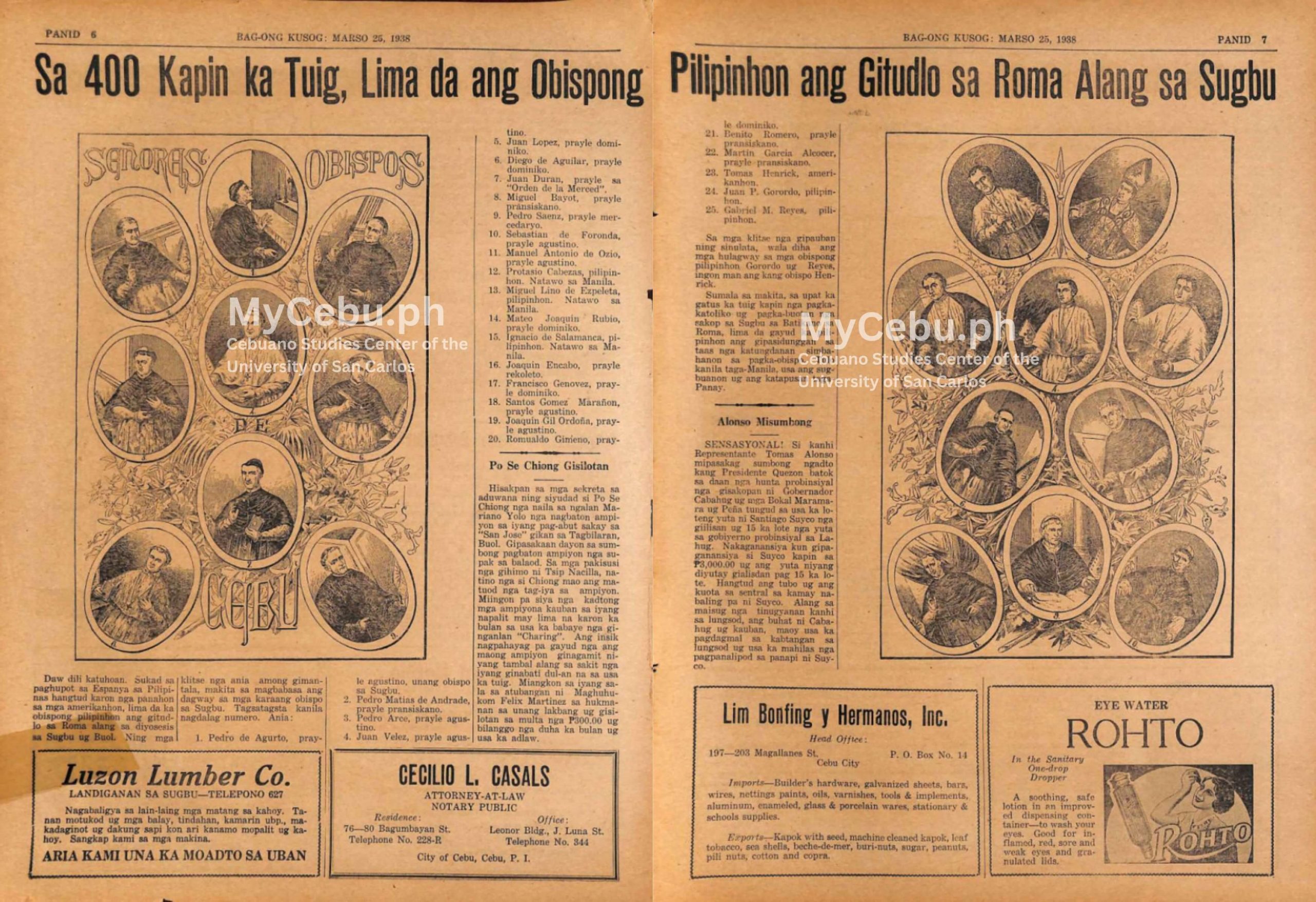
Excommunicated
A bishopric that is in partibus is in a non-Christian country or “in the regions of the infidels.” Merriam Webster says this is “used in a bishop’s title after the name of a diocese conquered by a power of another faith.”
Abella said that Bishop Pedro insisted before the tribunal that “his ‘marriage’ to his diocese remained valid and unassailable, expert opinions to the contrary notwithstanding. He was still Bishop of Cebu. But he refused to go there.”
Archbishop Lanciego excommunicated Bishop Pedro on Feb. 3, 1718. The latter, however, was obstinate and said the archbishop exceeded his authority and thus he did not consider himself excommunicated. Bishop Pedro said he could also excommunicate the archbishop, if he chose to do so. Abella said in his paper that this wasn’t unprecedented since a similar crisis happened in the Philippines when Manila Archbishop Diego Camacho y Ávila and Nueva Caceres Bishop Andrés González excommunicated each other.
Bishop Pedro continued “to exercise his episcopal functions.” A contemporary historian recounted how he met the bishop at an event where the latter “consecrated stones for the altars of Mexico.”
Bishop Pedro appealed his case to the Holy See and Abella said “the paperwork involved was considerable.” The King of Spain, realizing it would take years to settle the issue, decided to assign Cebu a prelate to oversee it while the case was pending.
The case of Bishop Pedro triggered the insistence on the strict observance of the papal bull of Pope Paul V “forbidding the consecration of bishops assigned to overseas dioceses outside of their assigned sees.”
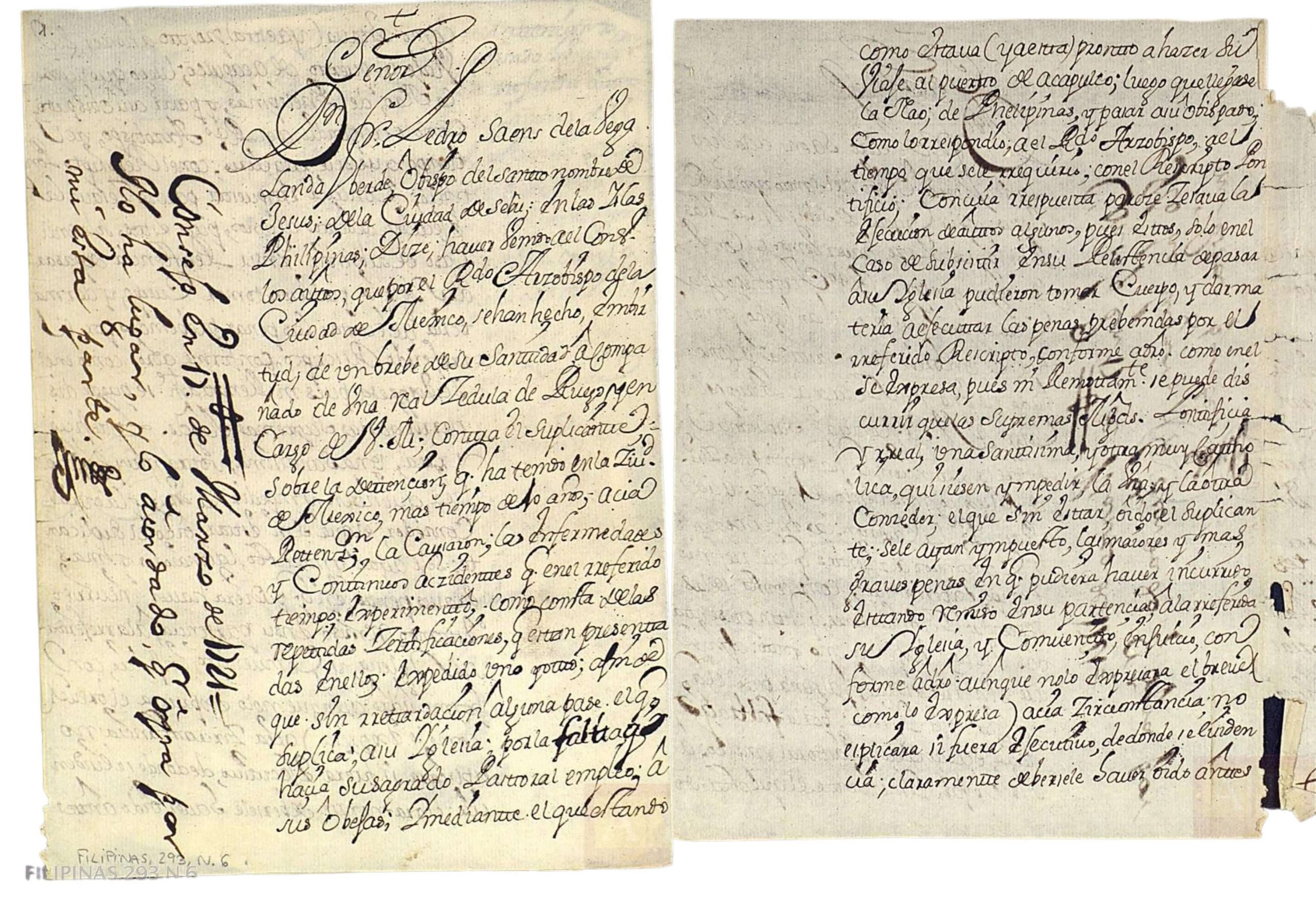
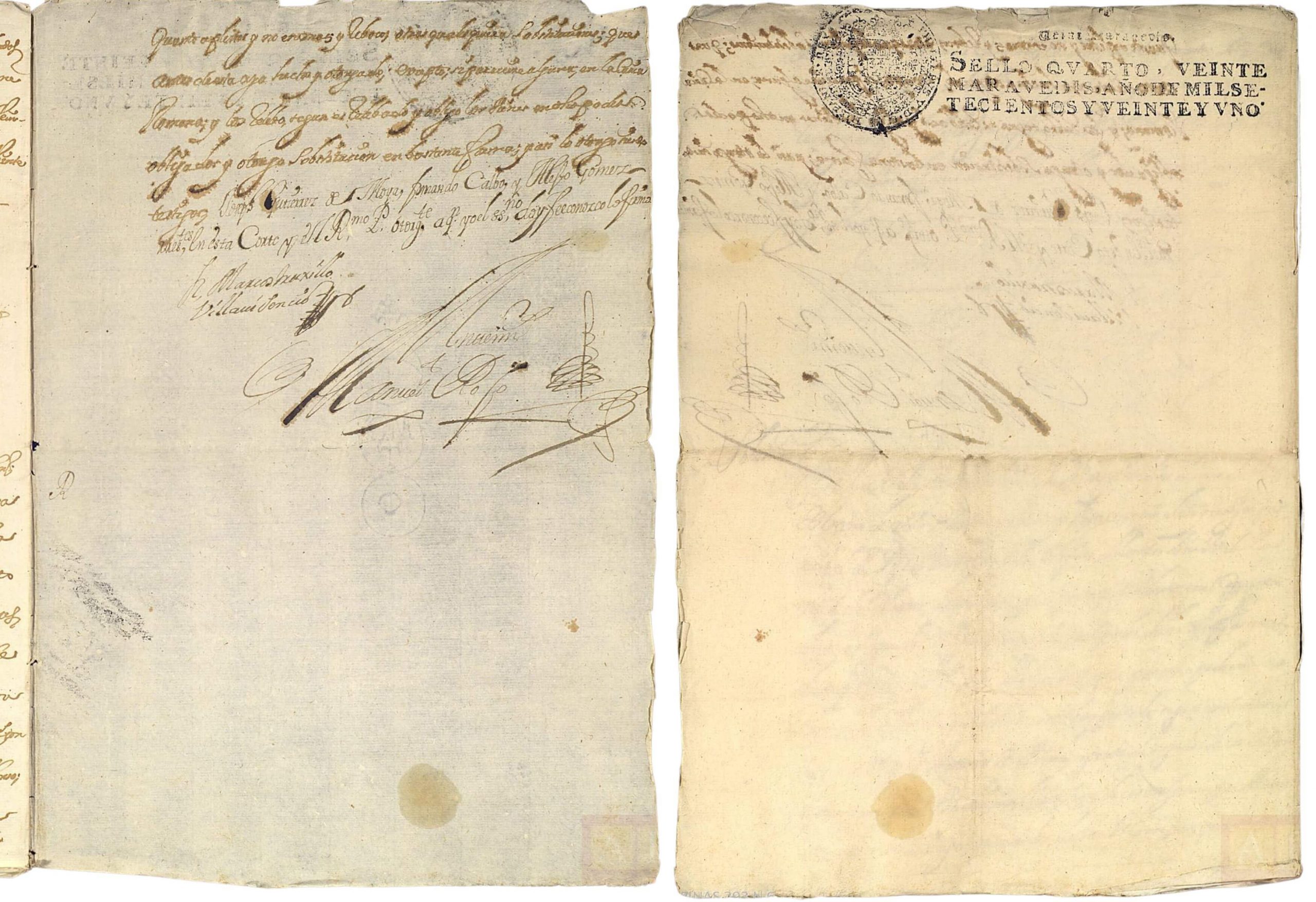
Administrator for Cebu
On January 23, 1717, the Council of the Indies recommended three names for the post. The first was Juan Lopez, the superior of the Augustinian convent in Manila. He declined. In 1721, the King of Spain recommended to the Vatican the Augustinian Sebastian de Foronda to be named administrator of Cebu.
“On 11 March 1722 Foronda was given consistorial promotion as ‘Bishop of Calidonia in partibus and Ecclesiastical Administrator of the See of Cebu in the absence of its residential Bishop,’” Abella wrote.
That seemed to have settled the issue.
“Such then was the status of these two prelates until they died, Bishop Landaverde in 1727 and Bishop Foronda in 1728. The records show that no further consistorial action was taken regarding them. It appears that the Vatican allowed the case to die a natural death by awaiting the demise of Landaverde,” Abella wrote.
Foronda, he pointed out, died before he could be “promoted in consistory to the See of Cebu.”
“In other words, although Bishop Landaverde never saw his diocese, he remained its proprietary bishop until his death. On the other hand, Bishop Foronda who governed the diocese for years was never canonically designated Bishop of Cebu even after Landaverde’s death when the see technically became vacant.”
“Thus it would appear that as far as the Vatican was concerned the Bishop of Calidonia was simply the ecclesiastical administrator of the Cebu diocese until his death.”
Abella then said that because of this, Foronda should not be included in the episcopal succession in the See of Cebu.

